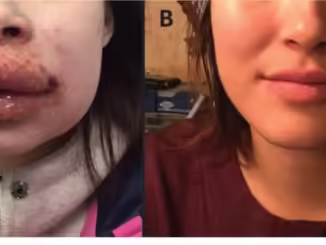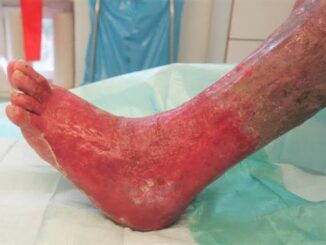
The Tragic Outcome of Misusing Numbing Cream: A Cautionary Tale
In the world of body art, including tattoos and piercings, the pursuit of client comfort often leads to the use of numbing creams. These topical anesthetics are intended to reduce pain and make the experience more bearable. However, when not used correctly, they can result in severe consequences. The case of a misguided recommendation by an artist that led to a client’s death underscores the critical importance of proper numbing cream application and highlights the potential dangers associated with these produ
The Role of Numbing Cream in Body Art
Numbing creams are widely employed in the tattoo and piercing industry to alleviate pain during procedures. These creams typically contain local anesthetics such as lidocaine or benzocaine, which work by blocking nerve signals in the applied area. The goal is to provide a more comfortable experience for clients, particularly those undergoing extensive or particularly painful procedures.
Despite their benefits, numbing creams must be used with caution. Overuse, incorrect application, or misuse can lead to serious health risks. Artists and clients alike must be educated about the proper use of these products to avoid adverse effects.
The Artist’s Advice: Misguided but Common
In this tragic case, the artist’s advice regarding the use of numbing cream proved to be ill-informed. The recommendation to apply a substantial amount of numbing cream in a manner not advised by product guidelines or medical standards set the stage for a dire outcome. The artist’s intent was likely to enhance client comfort, but the execution was fraught with risk.
Misguided advice can stem from various sources, including lack of proper training, reliance on anecdotal experiences, or misinformation. In this instance, the artist may have underestimated the potential risks associated with excessive use of numbing cream or failed to recognize the signs of an adverse reaction.
The Adverse Reaction: A Case Study
The client in question applied the numbing cream as advised by the artist. Unfortunately, this resulted in a severe skin reaction. The symptoms of the adverse reaction included redness, swelling, and a rash that quickly escalated. The client experienced difficulty breathing and collapsed shortly thereafter.
The reaction was exacerbated by the high concentration of anesthetic applied to the skin, leading to systemic toxicity. Local anesthetics, when absorbed in excessive amounts, can cause serious side effects, including cardiovascular and respiratory issues. In this case, the toxicity led to a fatal outcome, underscoring the dangers of improper numbing cream application.
#### The Consequences: Legal and Ethical Implications
The death of the client prompted a thorough investigation into the circumstances surrounding the incident. The artist faced legal and ethical repercussions for the misguided advice and the subsequent harm caused. The case highlighted the need for stringent regulations and training for professionals using numbing creams.
The incident serves as a stark reminder of the responsibilities held by body art professionals. Artists must be aware of the potential risks associated with numbing creams and adhere to best practices. Additionally, there must be clear guidelines and education to ensure that both artists and clients understand the proper use of these products.
#### Lessons Learned and Moving Forward
The tragedy underscores several critical lessons:
1. **Education and Training**: Body art professionals must receive comprehensive training on the use of numbing creams, including the correct application techniques and potential risks. Continuing education should be mandatory to keep up with the latest safety standards and practices.
2. **Adherence to Guidelines**: Strict adherence to manufacturer guidelines and medical advice is essential. Overuse or misuse of numbing creams can have severe consequences, and professionals must be diligent in following recommended practices.
3. **Client Communication**: Clear communication between artists and clients is crucial. Clients should be informed about the potential risks of numbing creams and any adverse reactions they might experience. Informed consent is an important part of ensuring client safety.
4. **Regulatory Oversight**: Increased regulatory oversight and standards for the use of numbing creams can help prevent similar tragedies. Establishing clear protocols and enforcing compliance can protect both clients and professionals.
#### Conclusion
The death of a client due to the misuse of numbing cream serves as a tragic and sobering reminder of the potential dangers associated with body art procedures. While the intention behind using numbing creams is to enhance client comfort, it is crucial that these products are used safely and responsibly. Proper education, adherence to guidelines, and open communication are essential to preventing such incidents and ensuring the well-being of clients. This case highlights the urgent need for vigilance and continuous improvement in safety practices within the body art industry.



Be the first to comment